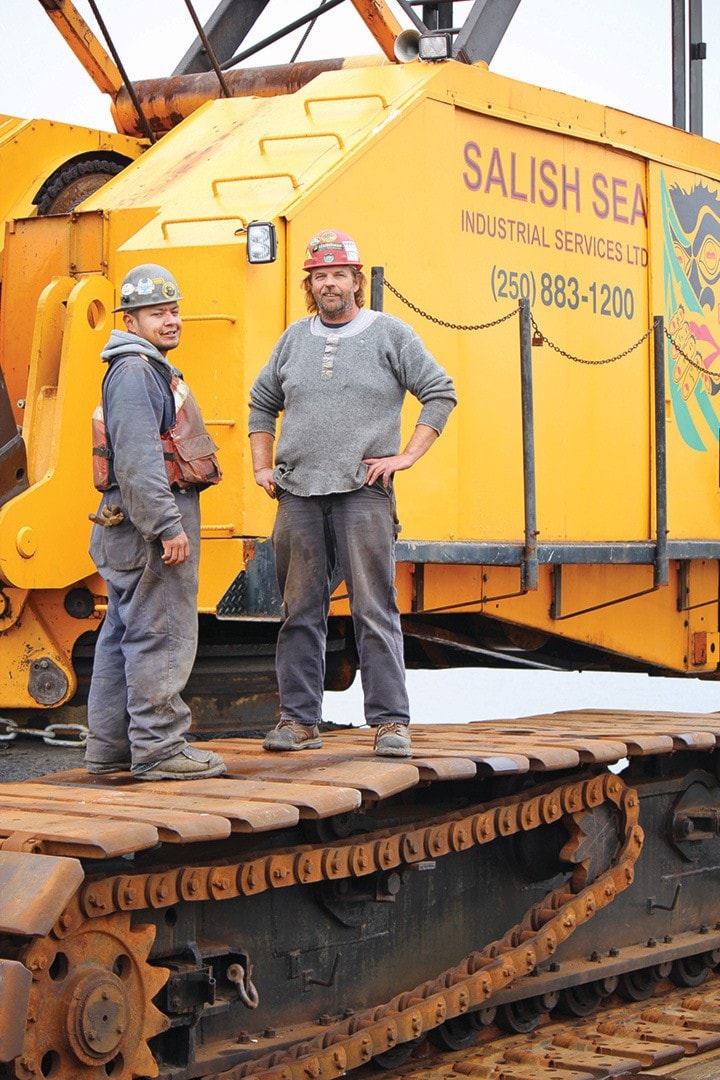Jerome Thomas bounced around between a number of different industrial companies before finding his future with Salish Sea Industrial Services.
Soon into his new job, Thomas and, more importantly his employers, realized he had a natural ability for pile driving. Thomas is now in the second year of his apprenticeship to become fully ticketed.
“I have an eye for the piles being straight,” Thomas said. “I see it as a career now, not as a job.”
Salish Sea Industrial, a joint company between the Esquimalt and Songhees Nations, is celebrating 17 months of operation and approximately $9 million worth of work so far.
Its focus on training First Nations youth entering the workforce is being touted as a model to help communities move forward and engage young people.
“We had the wood industry and the fishing industry before to lean on, but now there’s no more wood, no more fish, so we’re trying to find the next economy for the next 100 years,” said Esquimalt Nation Chief Andy Thomas. “We’ve been invisible for too long and we need to have these chances.”
As a water-based business, Thomas said it’s also the perfect fit for the First Nations communities, which have traditionally been tied to the water. The two communities also have traditional ties to each other, as both are Lkungen people and were once a single community.
Songhees and Esquimalt have a 51 per cent controlling interest in the company and a board of directors made up of members of the communities, along with Ralmax Contracting Ltd., which owns the other 49 per cent.
The company provides opportunities for training in a variety of trades and positions. Every time a job opens up it is posted first in the First Nations communities, before being opened to the general public.
Out of about 24 employees, 15 are First Nations. Of those, eight work in the marine construction department, which installs pilings and does marine construction, such as building docks and bridges.
Songhees director of operations Christina Clarke said government programs to help First Nations communities simply aren’t working, and for these two First Nations groups to come together and take a chance with unique ventures such as this is momentous.
“We need to generate revenue and do it in a meaningful way, to really provide education and help programs … based on our priorities and not on the priorities of someone sitting in Ottawa,” Clarke said. “(We) want to remind the region that the Lkungen people are still here and are reengaging in the regional economy.”
See related story:
